Flags of Countries that Start with S
How many countries beginning with S? There are a total of 27 countries starting with letter S among the 193 countries in the world:
- Samoa
- San Marino
- Sao Tome and Principe
- Saudi Arabia
- Senegal
- Serbia
- Seychelles
- Sierra Leone
- Singapore
- Slovakia
- Slovenia
- Solomon Islands
- Somalia
- South Africa
- South Korea
- South Sudan
- Spain
- Sri Lanka
- Saint Kitts and Nevis
- Saint Lucia
- Saint Vincent and The Grenadines
- Sudan
- Suriname
- Swaziland
- Sweden
- Switzerland
- Syria
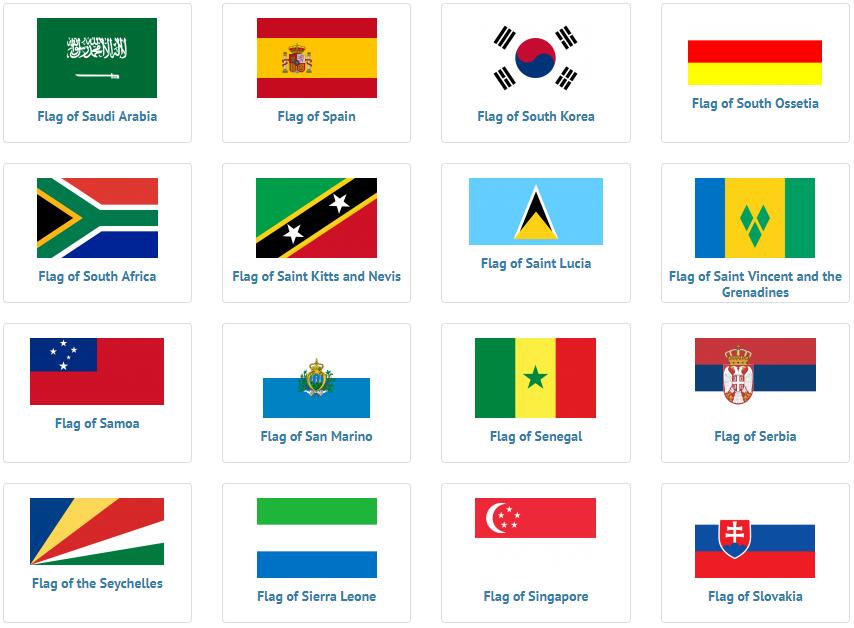
San Marino

San Marino is a small republic in S-Europe. The country is like an enclave in the north of Italy close to the Adriatic Sea. The countryside is mountainous with forest and grasslands.
There is subtropical Mediterranean climate.
The country has few significant natural resources. The most important professions are tourism, trade and finance and the sale of stamps. Cattle are kept and grapes are grown for the production of wine.
San Marino is one of the smallest states in the world and is a very rich and wealthy country with an extended welfare system. Among other things, the state has a common customs union with Italy. San Marino is not a member of the EU, but due to low taxation, the small state attracts many companies and individuals from the EU countries.
Country Facts – State Capital – Population Graph – Airports – Public Holidays – Embassies of San Marino – Embassies in San Marino
Switzerland
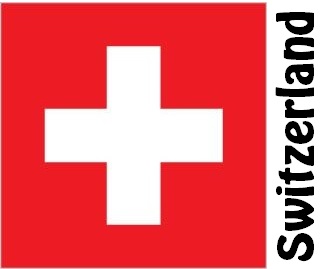
Switzerland is a Federal Republic of Central Europe. The country is surrounded by France, Germany, Liechtenstein, Austria and Italy. The landscape is made up of the Alps of the S and Jurassic Mountains of NV. Central to the country there is a high plateau. There are many large lakes, including Lake Constance in the NE and Lake Geneva in the SV. The Rhine and Rhone rivers originate in Switzerland.
The climate is temperate mainland climate.
The country’s most important natural resources are hydropower. There is a large cattle team. Industry, tourism, banking and finance as well as insurance are the largest and most important professions.
Switzerland is a very rich country with a high standard of living. The country is especially known for pursuing a consistent neutrality policy and for having a very direct democracy. Since 1972 Switzerland has had a free trade agreement with the EU.
Country Facts – State Capital – Population Graph – Airports – Public Holidays – Embassies of Switzerland – Embassies in Switzerland – Import Regulations – Major Trade Partners – Major Imports – Major Exports
Serbia

Serbia is a republic in the Balkans in southern Europe. The country is an inland state with borders to Bosnia and Herzegovina, Croatia, Hungary, Romania, Bulgaria, Macedonia, Kosova and Montenegro. The landscape is made up of mountains and hills in the lake. Serbia is flooded by the river Danube.
Serbia has temperate mainland climate, however subtropically furthest towards S.
The most important natural resources are oil, coal and minerals. Agriculture is the main profession.
After World War II, Serbia was part of Yugoslavia, and from 1992 to 2006 it was part of Serbia-Montenegro. In the 1990s, there was a civil war in Yugoslavia, where several sub-republics wanted independence from Serbian domination. Until 2008, Kosovo was part of Serbia. In 2012, Serbia became a candidate for EU membership.
Country Facts – State Capital – Population Graph – Airports – Public Holidays – Import Regulations – Major Trade Partners
Slovakia
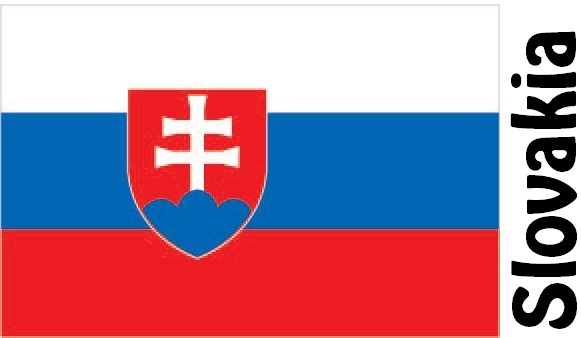
Slovakia is a republic in Central Europe. The country is an inland state surrounded by Austria, the Czech Republic, Poland, Ukraine and Hungary. In the country’s central and northern regions there are mountainous with valleys, lakes and wooded mountain ranges (the Carpathians). IS, the landscape consists of plains and in the lake a karst landscape with dripping caves and underground rivers.
Slovakia has temperate mainland climate.
The country has only limited natural resources. The most important are lignite, lignite, copper and iron ore, as well as agricultural land, hydropower and timber. Industry and service are the most important occupations, and machinery in particular is exported.
Slovakia became independent in 1993 when Czechoslovakia was disbanded and divided into the Czech Republic and Slovakia. The country is both a member of NATO and the EU.
Country Facts – State Capital – Population Graph – Airports – Public Holidays – Import Regulations
Slovenia
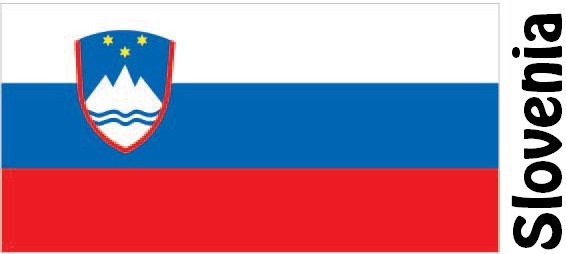
Slovenia is a republic in southern Europe. It borders Italy, Austria, Hungary and Croatia and has a short coastline to the Adriatic Sea. The countryside is mountainous with highlands, mountain ranges and forest in most of the country. In the island there is a plain landscape with meadows and rivers. IS and V there are karst landscapes with dipping caves and underground rivers.
On the coast there is subtropical Mediterranean climate, and in the rest of the country there is a temperate climate.
The most important natural resources are timber, hydroelectric, lignite, iron, zinc, copper and lead. Agriculture is very limited.
Slovenia was part of Yugoslavia until 1991, when it became independent. Slovenia is a member of NATO and the EU.
Country Facts – State Capital – Population Graph – Airports – Public Holidays – Embassies of Slovenia – Embassies in Slovenia – Import Regulations – Major Trade Partners – Major Imports – Major Exports
Spain

Spain is a kingdom in SV Europe. The country forms the majority of the Iberian Peninsula and also includes two enclaves in Morocco, the Canary Islands and the Balearic Islands. Spain has coastlines to the Atlantic and Mediterranean as well as borders to France, Andorra, Portugal and Morocco. The landscape consists of an inner high plateau surrounded by mountains as well as lowland and marshland.
There is temperate coastal climate in NV and subtropical climate in the rest of the country. The interior of the country is dry and very hot.
The country’s most important natural resources are coal, iron ore, copper, zinc, lead, salt, hydroelectric power, agricultural land and fish. Olives, grapes, citrus fruits, grains and vegetables are mainly grown
Spain used to be a great colonial power. Spain is a member of NATO and the EU.
Country Facts – State Capital – Population Graph – Airports – Public Holidays – Embassies of Spain – Embassies in Spain – Import Regulations – Major Trade Partners – Major Imports – Major Exports
Sweden

Sweden is a kingdom in Northern Europe. The country borders Norway and Finland and has coastlines to the Skagerrak, the Kattegat, the Baltic and the Gulf of Bothnia. The landscape is mostly flat or slightly hilly lowland with large lakes in S, mountains in V and high mountains in the northern parts of the country.
The climate is in most places temperate mainland climate with long snowy winters and warm summers. Farther to the south, however, there is coastal climate, and in the high mountains farthest to the north there is polar climate.
Sweden has large areas of coniferous forest, which form the basis for an extensive production of wood products and paper. The most important natural resources are iron ore, precious metals, timber and hydropower. Sweden has a highly developed industrial sector.
Sweden, like the other Scandinavian countries, has a high standard of living. Sweden is a member of the EU.
Country Facts – State Capital – Population Graph – Airports – Public Holidays – Embassies of Sweden – Embassies in Sweden – Import Regulations – Major Trade Partners – Major Imports – Major Exports
Saint Kitts and Nevis

Saint Kitts and Nevis is a kingdom in the Caribbean. The island state consists of the two islands of Saint Kitts and Nevis and is part of the archipelago of Leeward Island in the northern part of the Little Antilles in the Caribbean. The islands are volcanic and mountainous with forest and sandy beaches.
The climate is tropical with rainy season between May and November. The climate characterized by the northeast pass.
The country’s only natural resource is agricultural land, and the most important crop is sugar cane. Yams, sweet potatoes, coconuts and bananas are also grown. Tourism is central to the country’s economy.
Saint Kitts and Nevis, despite persistent opposition from Nevis, are part of The Commonwealth.
Country Facts – State Capital – Population Graph – Airports – Public Holidays – Import Regulations – Major Imports – Major Exports
Saint Lucia

Saint Lucia is a kingdom in the Caribbean. The island is part of the Windward Islands archipelago in the Little Antilles on the Caribbean-Atlantic border. The island is volcanic and mountainous with springs, mountains, river valleys, rainforest and sandy beaches. Off the SV coast are two mountain peaks Petit Piton and Gros Piton.
The climate is tropical and humid with trade winds. There is rainy season from May to August.
Bananas are the island’s most important crop and export commodity. Fruits, coconuts and spices are also grown. Tourism is growing and of great importance to the country’s economy.
Saint Lucia became independent in 1979 and is now part of The Commonwealth.
Country Facts – State Capital – Population Graph – Airports – Public Holidays – Embassies of Saint Lucia – Embassies in Saint Lucia – Import Regulations – Major Trade Partners – Major Imports – Major Exports
Saint Vincent and the Grenadines

Saint Vincent and the Grenadines are located in the Caribbean. The country includes the island of Saint Vincent as well as the northern part of the Grenadines archipelago. The island state is part of the Windward Islands archipelago of the Little Antilles in the Caribbean Sea bordering the Atlantic. The islands are volcanic with sandy beaches and coral reefs. There is rainforest on Saint Vincent.
The climate is tropical with rainy season from May to December. Hurricanes occur frequently in the area.
The country’s main export goods are bananas, arrowroot and sweet potatoes. In addition, sugar cane, cotton and nutmeg are grown. Tourism is growing.
Like many other Caribbean islands, Saint Vincent and the Grenadines are part of The Commonwealth.
Country Facts – State Capital – Population Graph – Airports – Public Holidays – Embassies of Saint Vincent and the Grenadines – Import Regulations – Major Trade Partners – Major Imports – Major Exports
Suriname

Suriname is a republic in northeastern South America. The country is bordered by Guyana in the V, Brazil in the S, French Guiana in the island and the Atlantic in the N. The northern part of the country is made up of a swampy coastal plain with lowland and mangrove forest. The rest of the country consists of plateaus and highlands with dense rainforest and rivers.
The climate is tropical.
The country’s most important natural resources are bauxite for the production of aluminum, wood, hydropower, shrimp, oil, gold and diamonds. Agriculture is limited, but rice, bananas, sugar cane, coconuts, coffee and cocoa are grown.
Until 1975, Surinam was a Dutch colony and the country was called Dutch Guiana. Political unrest and economic problems are ravaging the country.
Country Facts – State Capital – Population Graph – Airports – Public Holidays – Embassies of Suriname – Embassies in Suriname – Import Regulations – Major Imports – Major Exports
Sao Tome and Principe
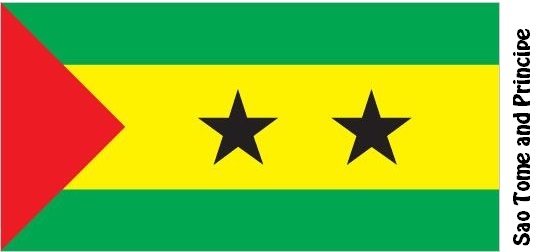
Sao Tome and Principe are a small island in the Gulf of Guinea off the coast of V-Africa. The country includes the two islands of São Tomé and Príncipe as well as a few smaller islands. The islands are of volcanic origin and mountainous with dense rainforest on the SV slopes.
The climate is humid and tropical. The amount of rainfall is greatest in SV and decreases towards NO.
Agriculture is fundamental to the country’s economy. The main selling crops are cocoa, coffee, copra, palm oil and coconuts. Oil reserves in the sea between the estates and Nigeria and the sale of fishing rights are also significant sources of revenue for the country.
Until 1975, Sao Tome and Principe were a Portuguese colony.
Country Facts – State Capital – Population Graph – Airports – Public Holidays – Embassies of Sao Tome and Principe – Import Regulations – Major Trade Partners
Senegal

Senegal is a republic in V-Africa with a coast to the Atlantic Ocean. The country has borders with Mauritania, Mali, Guinea, Guinea-Bissau and Gambia. The landscape consists of lowland, rainforest in the SV, steppes and semi-desert in the N, mountain scenery in the SE, plateaus in V and mangrove swamps on the coast.
There is humid tropical climate in S with rainy season May-June to October-November. IN there are shrubs.
Agriculture is the biggest profession. Especially peanuts are grown for export as well as cotton, millet, rice and sugar cane. In addition to agriculture, fishing and phosphate extraction are of great importance. The country also has natural gas, iron and gold.
Senegal became independent from France in 1960, and was in union with the Gambia from 1982 to 1989. The country has a stable democracy.
Country Facts – State Capital – Population Graph – Airports – Public Holidays – Embassies of Senegal – Embassies in Senegal – Import Regulations – Major Trade Partners – Major Imports – Major Exports
Seychelles
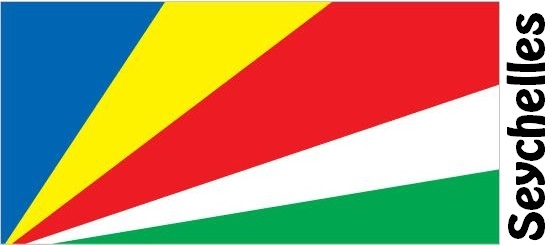
Seychelles is a republic in the western part of the Indian Ocean Island of Africa. The country includes about 115 islands, the largest of which is Mahé. The larger islands have narrow coastal strips and beaches as well as an inland highland of granite. Many of the smaller islands are atolls or coral reefs.
The climate is tropical and hot with high rainfall. However, drier and cooler in the period May to October.
Tourism and agriculture are the main occupations. In agriculture, copra, cinnamon, coconuts, tea, cassava and sweet potatoes are grown. Fisheries and phosphate extraction are also important occupations in the country.
The Seychelles have been a British colony in the past. The country became independent in 1976.
Country Facts – State Capital – Population Graph – Airports – Public Holidays – Embassies of Seychelles – Embassies in Seychelles – Import Regulations – Major Trade Partners – Major Imports – Major Exports
Sierra Leone

Sierra Leone is a republic in V-Africa. The country lies between Guinea and Liberia with a coastline to the Atlantic Ocean. The landscape consists of a wide coastal plain with mangrove swamps, wide estuaries, sandy beaches and lagoons, inland and upland valleys and uplands with plateaus, savanna and mountains in the north and east.
The climate is tropical with large amounts of rainfall. Rainy season from May to November.
The country’s most important natural resources are diamonds, rutile (titanium ore) and bauxite. Mining and agriculture are the main occupations. In agriculture, coffee, cocoa, palm kernels, rice, manioc, millet, beans, sweet potato and maize are grown, among other things.
Sierra Leone was a British colony until 1961. In the period 1991-2002 the country was ravaged by civil war.
Country Facts – State Capital – Population Graph – Airports – Public Holidays – Embassies of Sierra Leone – Import Regulations
Somalia
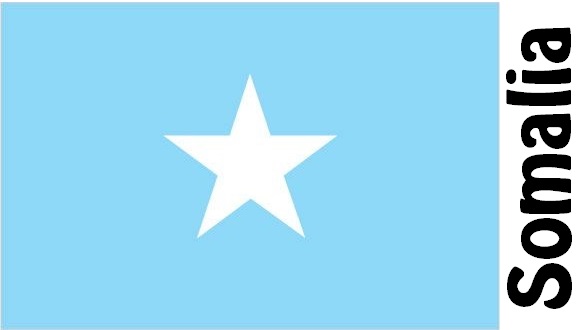
Somalia is a republic in East Africa. The country lies on the Horn of Africa on the Gulf of Aden and the Indian Ocean. Somalia borders Djibouti, Ethiopia and Kenya. The landscape consists mostly of dry plains and plateaus. To the N there are highlands, woods and mountains, in the NØ there are bush steppes and desert, and in S there are lowlands and savanna. Coral reefs off the coasts.
The climate is tropical with limited rainfall.
A large proportion of the population are nomads living from self-sufficiency farming and animal husbandry. The country has untapped deposits of salt, tin, zinc, iron, copper, manganese, uranium and natural gas.
Somalia was a British colony until 1960 and the country is one of the world’s poorest. Floods, droughts, hunger, conflicts, unrest and civil war continue to ravage the country.
Country Facts – State Capital – Population Graph – Airports – Public Holidays – Embassies of Somalia – Import Regulations – Major Imports – Major Exports
Sudan

Sudan is a republic in North Africa by the Red Sea. Borders of Egypt, Libya, Chad, Central African Republic, South Sudan, Ethiopia and Eritrea. The landscape consists of flat desert in N, mountains in NØ, flat plains in V, rainforest in SV, swampy areas and savanna in S as well as agricultural areas along the Nile centrally in the country and in the island.
The climate is warm and dry, especially in the northern part of the country. There is rainy season April-November.
The most important natural resources are Nile water and oil. Sesame, millet, cotton, peanuts and rubber are grown for export.
Sudan became independent from Britain in 1956. The former Sudan was divided into present-day Sudan and South Sudan in 2011. The country has been ravaged by many periods of civil war.
Country Facts – State Capital – Population Graph – Airports – Public Holidays – Embassies of Sudan – Embassies in Sudan – Import Regulations – Major Trade Partners – Major Imports – Major Exports
Swaziland

Swaziland is a small inland state surrounded by South Africa and Mozambique. The landscape consists of mountains, plateaus, savannah, rainforest, hills and rivers. There are highlands in V and lowlands in the island.
The climate is tropical.
The most important resources are asbestos, coal, wood, diamonds, gold and hydropower. The country’s reserves of iron are depleted. Agriculture is the dominant industry and sugar cane and citrus fruit are mainly grown for export as well as various self-sufficiency crops.
Swaziland was formerly a British colony, but the country became independent in 1968. The country is very poor and over 1/3 of the adult population is infected with HIV / AIDS. In addition, Swaziland is ravaged by periods of drought.
Country Facts – State Capital – Population Graph – Airports – Public Holidays – Embassies of Swaziland – Import Regulations
South Africa

South Africa is a republic that forms the southern tip of the African continent. The country surrounds the inland state of Lesotho. The landscape consists of a central plateau with forest and bush steppes surrounded by mountains and mountain ranges as well as deep river valleys, high plains and narrow coastal plains.
Subtropical climate with winter rain to the south and summer rain to the north. Border towards NV to the Kalahari Desert.
The country is very rich in natural resources. gold, coal, natural gas, diamonds, asbestos, copper, chromium, platinum, iron, vanadium, uranium and manganese. Mining, industry and tourism are the main occupations.
South Africa was part of the British Commonwealth until 1961. The apartheid regime was abolished in 1994. However, there are still major social differences in the country. Up to 1/5 of the population is infected with HIV / AIDS.
Country Facts – State Capital – Population Graph – Airports – Public Holidays – Import Regulations – Major Trade Partners – Major Imports – Major Exports
South Sudan

South Sudan is a republic in East Africa. The country has borders with Sudan, Ethiopia, Kenya, Uganda, Congo (democratic) and the Central African Republic. The landscape consists of plains and savannahs in the N, highlands and mountains in the S, rainforest and swamps in the SV and lowlands in the Island. The White Nile creates a large, flat swamp area centrally in the country.
The climate is tropical. Most precipitation in S.
The most important natural resources are fertile agricultural land, oil, hydropower and a variety of minerals. The livestock team is great.
In 2011, Sudan was divided into present-day Sudan and South Sudan. The country is ravaged by years of civil war between Arab-Muslim northern Sudan and Christian South Sudan. In 2014, fighting continued in South Sudan and more than one million people were displaced from their homes.
Country Facts – State Capital – Population Graph
Saudi Arabia
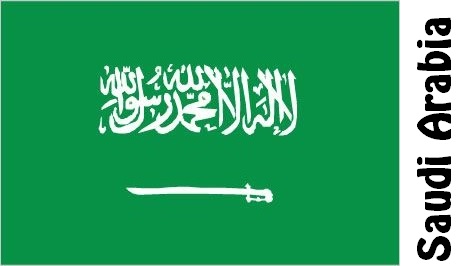
Saudi Arabia is a Kingdom of SV Asia that makes up the majority of the Arabian Peninsula. The country has a coast to the Red Sea and Persian Gulf as well as borders to Jordan, Iraq, Kuwait, Qatar, United Arab Emirates, Oman and Yemen. The landscape consists mostly of plateaus and steppes. In SV there are mountains.
There is a dry and warm tropical climate with large temperature fluctuations around the clock. There is virtually no rainfall.
The country is rich in natural resources, the most important of which is oil and natural gas. The majority of export revenue comes from the oil sector. Agriculture, which is mostly irrigated in most of the country, employs a large proportion of the population.
Saudi Arabia has a conservative and religious government.
Country Facts – State Capital – Population Graph – Airports – Public Holidays – Embassies of Saudi Arabia – Embassies in Saudi Arabia – Import Regulations – Major Imports – Major Exports
Singapore

Singapore is a republic and island state in SE Asia. The country includes the main island of Singapore and about 60 small islands S of the Malacca Peninsula. The Johor Strait is located between Malaysia and Singapore, and the Singapore Strait is between Singapore and Indonesia. The main island is made up of lowland with mangrove swamps and rainforest, large areas are built up. There are coral reefs on the coasts.
The climate is tropical with all year rain.
The country has no significant natural resources. Industry, service and tourism are the most important occupations. Singapore is an important financial and trading center in Asia.
Singapore was a British colony until 1963, and the country became independent in 1965. Singapore is one of the richest countries in SE Asia, and the economy continues to grow.
Country Facts – State Capital – Population Graph – Airports – Public Holidays – Embassies of Singapore – Embassies in Singapore – Import Regulations – Major Trade Partners – Major Imports – Major Exports
Sri Lanka

Sri Lanka is an island and republic of the Indian Ocean in South Asia. The island state is SO south of India. Centrally located on the island and in the S there are highlands and mountains. Facing the N and the coasts there is a plain landscape. There is rainforest in the SV and savanna in the SE and N.
The climate is tropical with monsoon rain. On the northern part of the island there is more dry. The country was hit hard by a violent tsunami in 2004.
Agriculture employs approx. 1/3 of the population. Tea, rubber, cocoa, coconuts, rice, coffee and fruit are grown. Hydropower is a very important source of energy for the country.
Until 1948, Sri Lanka was a British colony, which until 1972 was called Ceylon. Sri Lanka was ravaged by civil war from 1983 to 2009. Since the end of the war, tourism has increased significantly.
Country Facts – State Capital – Population Graph – Airports – Public Holidays – Embassies of Sri Lanka – Embassies in Sri Lanka – Import Regulations – Major Trade Partners – Major Imports – Major Exports
South Korea

South Korea is a republic that forms the southern part of the Korean Peninsula. Border to North Korea and coastlines to the Yellow Sea in the V, the Korea Strait to the S and the Japanese Sea in the Island. The landscape consists mainly of low mountains, ridges and plains. Coniferous forest as well as lowland, deciduous forest and a strongly cut coast in S.
There is temperate mainland climate with monsoon rain, hot summers and dry, cool winters in N. IS, the climate is subtropical.
The country’s most important natural resources are fish, coal and a few minerals. Rice, barley, soybeans, potatoes, yams, tobacco and cotton are grown and silk is produced. Industry and fisheries are the most important occupations. Korea has a large electronics, automotive and shipping industry.
The Korean Peninsula was divided into North Korea and South Korea after the Korean War 1950-1953. The relationship between the two countries is tense.
Country Facts – State Capital – Population Graph – Airports – Public Holidays – Embassies of South Korea – Embassies in South Korea – Import Regulations – Major Trade Partners – Major Imports – Major Exports
Syria
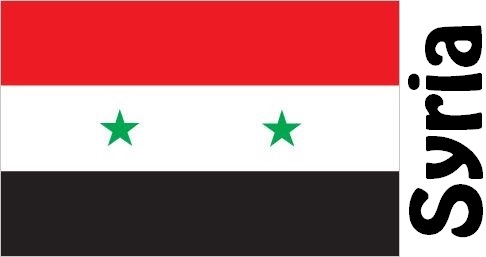
Syria is a republic in SV Asia with a coast to the Mediterranean. The landscape consists of mountains in NV and SV, desert and steppes in the island and the SE, a narrow Mediterranean coastline. Plains and bushes central to the country. The river Euphrates runs through the country from N to SE.
Centrally in the country there are grass and bush steppes, and on the coast of V there is subtropical Mediterranean climate.
The country’s most important natural resources are oil and natural gas. Agriculture employs about 1/6 of the workforce. cotton, wheat, barley, olive, tobacco, citrus and sugar beet are mainly grown.
Riots, protests and demonstrations have led to civil war in the country. Poverty a big problem. From 1976 to 2005, Syria had occupied large parts of Lebanon. Civil War in 2012-14.
Country Facts – State Capital – Population Graph – Airports – Public Holidays – Embassies of Syria – Embassies in Syria – Import Regulations – Major Trade Partners – Major Imports – Major Exports
Solomon Islands

The Solomon Islands is a kingdom in Oceania that includes the Solomon Islands, Santa Cruz Islands and five other islands. The island state is located in the southwest Pacific Island of Papua New Guinea. Solomon Islands consists of two parallel rows of volcanic islands and atolls. The landscape of the islands is mountainous with rainforest.
The climate is tropical and rainy. Hurricanes and typhoons may occur.
Agriculture, fisheries, forestry and tourism are the main occupations. Many live on self-sufficiency farming. Exports of especially timber fish, coconut, palm oil and cocoa.
The Solomon Islands became independent in 1978 with a monarchy within The Commonwealth. The country has been ravaged by ethnic groups for several years.
Country Facts – State Capital – Population Graph – Airports – Public Holidays – Embassies of Solomon Islands – Import Regulations
Samoa
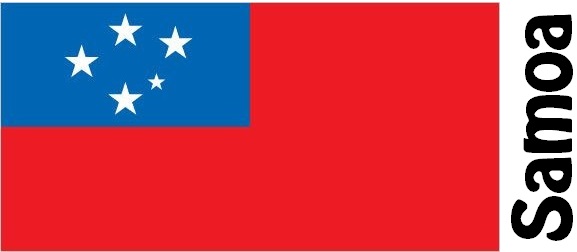
Samoa is a kingdom in Oceania. The island state is located in the southern Pacific Ocean and comprises an archipelago consisting of two main islands and a number of smaller islands. The islands are volcanic and mountainous with rainforest and coral reefs on the coasts.
The climate is tropical and rainy. Hurricanes sometimes occur.
Agriculture employs the majority of the population. Especially cocoa, coconuts and copra are grown for export and various crops for self-sufficiency. Fishing and tourism are also important professions.
Samoa was previously a mandate area under New Zealand, but became independent in 1962. Until 1997, the country was called Western Samoa.

Country Facts – State Capital – Population Graph – Airports – Public Holidays – Embassies of Samoa – Embassies in Samoa – Import Regulations – Major Trade Partners – Major Imports – Major Exports













































